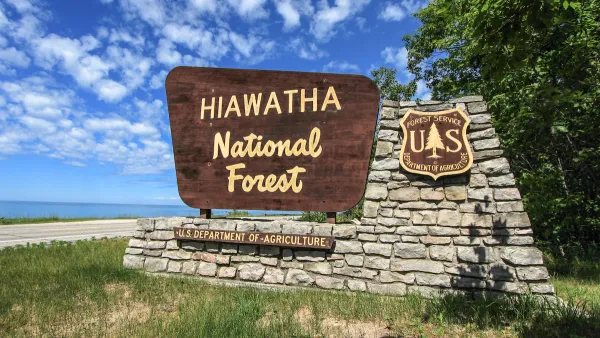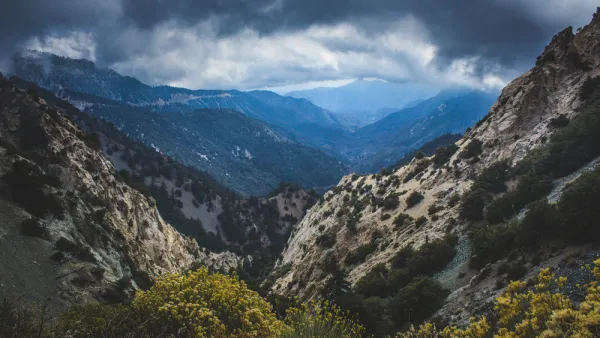An editorial calls for innovative policy in post-fire recovery and reforestation. The recent release of the Environmental Impact Statement for the recovery of the Rim Fire should serve as a barometer for a "new public forestry."
"Something is terribly wrong with California’s national forests, vast public lands that cover 20 percent of our state. According to the U.S. Forest Service, they’re burning up faster than we’re replenishing them. They’re also on track to become net carbon emitters by the middle of this century," reports William Kade Keye.
To put the scale of deforestation by forest fire in some context: "Imagine a continuous swath of fire-charred trees 1.9 miles wide stretching from Los Angeles to San Francisco. That’s how much of California’s national forests have been converted to “deforested conditions” just this century."
The article includes a primer on the history of national forest management policy, as well as the current state of policy and the impact of climate change on the size and severity of forest fires.
On the latter point: "Post-fire recovery and reforestation, including tree planting, is expensive. It requires public support and investment. A reliable funding source is the sale of dead timber to nearby sawmills. Unfortunately, some activists have vigorously – often successfully – opposed post-fire salvage logging. Stopping all commercial harvesting, even that required to clear dead trees for reforestation, has become an ideological badge of honor."
The editorial instead recommends active management of forests, which Keye argues will modify future wildfire impact. The Forest Service, says Keye, needs t win this next test: "The Stanislaus [National Forest] has just released its draft environmental impact statement, which supports carefully targeted salvage logging in advance of urgently needed reforestation. Alarming voices, citing dubious science, will line up in opposition, doing everything they can to maintain the failed status quo."
FULL STORY: Viewpoints: Don’t let our burned-out national forests become a ‘national ashtray’

National Parks Layoffs Will Cause Communities to Lose Billions
Thousands of essential park workers were laid off this week, just before the busy spring break season.

Retro-silient?: America’s First “Eco-burb,” The Woodlands Turns 50
A master-planned community north of Houston offers lessons on green infrastructure and resilient design, but falls short of its founder’s lofty affordability and walkability goals.

Delivering for America Plan Will Downgrade Mail Service in at Least 49.5 Percent of Zip Codes
Republican and Democrat lawmakers criticize the plan for its disproportionate negative impact on rural communities.

Test News Post 1
This is a summary

Test News Headline 46
Test for the image on the front page.

Balancing Bombs and Butterflies: How the National Guard Protects a Rare Species
The National Guard at Fort Indiantown Gap uses GIS technology and land management strategies to balance military training with conservation efforts, ensuring the survival of the rare eastern regal fritillary butterfly.
Urban Design for Planners 1: Software Tools
This six-course series explores essential urban design concepts using open source software and equips planners with the tools they need to participate fully in the urban design process.
Planning for Universal Design
Learn the tools for implementing Universal Design in planning regulations.
EMC Planning Group, Inc.
Planetizen
Planetizen
Mpact (formerly Rail~Volution)
Great Falls Development Authority, Inc.
HUDs Office of Policy Development and Research
NYU Wagner Graduate School of Public Service




























